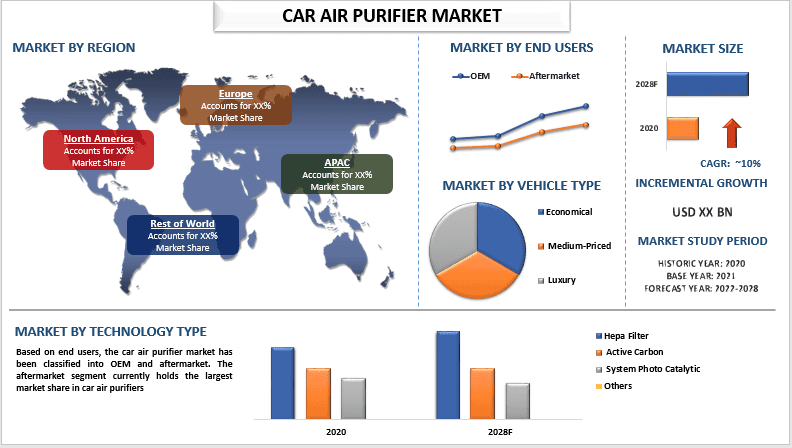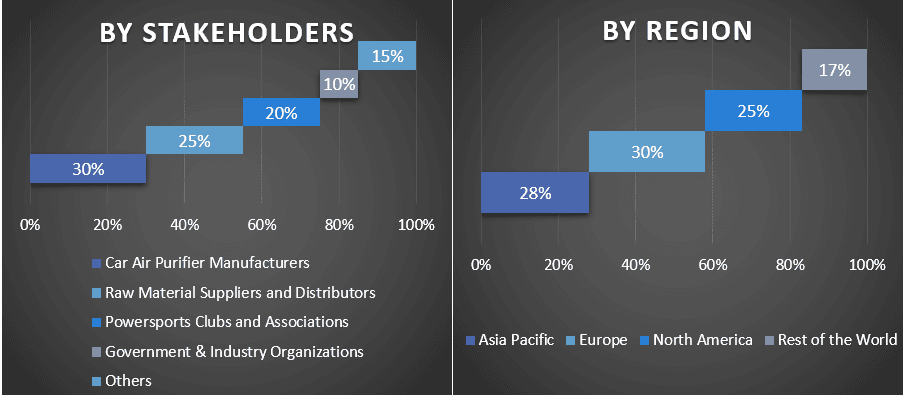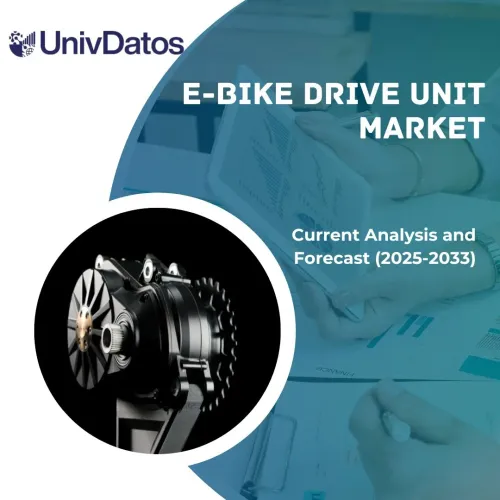- Accueil
- À propos de nous
- Industrie
- Services
- Lecture
- Contactez-nous
Marché des purificateurs d'air pour voiture : Analyse actuelle et prévisions (2022-2028)
Accent mis sur le type de technologie (filtre HEPA, charbon actif, système photocatalytique, autres) ; Type de véhicule (économique, milieu de gamme, de luxe) ; Utilisateurs finaux (OEM et marché secondaire) ; et Région/Pays

Le marché mondial des purificateurs d'air pour voiture devrait croître à un rythme significatif d'environ 10 % au cours de la période de prévision. Les pays à revenu faible et moyen enregistrent les niveaux de pollution atmosphérique les plus élevés, tandis que les pays à revenu élevé enregistrent les niveaux les plus faibles. En raison de la forte exposition à l'environnement ouvert et de la susceptibilité accrue à l'exposition à l'air pollué, le niveau croissant de pollution atmosphérique dans les zones urbaines sera l'une des principales raisons du développement du marché des purificateurs d'air pour automobiles. En outre, afin d'améliorer la qualité et la conception de l'automobile, les consommateurs réclament des produits dotés d'interfaces utilisateur multifonctionnelles, petites, légères et faciles à utiliser. Les fournisseurs s'engagent également dans des opérations de fusions et acquisitions et dépensent de l'argent en R&D pour créer des articles améliorés qui embaument l'air de parfums attrayants. Par exemple, le géant néerlandais de l'électronique Philips prévoit d'étendre ses efforts de R&D à la Chine, Shanghai jouant un rôle clé dans le réseau mondial de R&D de la multinationale, en particulier dans l'innovation des produits de purification d'air pour voitures. Après que le smog intense ait frappé les grandes villes chinoises, les ventes de purificateurs d'air pour voitures de Philips ont connu une croissance phénoménale, le produit étant épuisé à plusieurs reprises. Au cours des cinq dernières années, l'entreprise a augmenté ses ventes annuelles de produits de purification d'air en Chine d'environ 50 %.
Informations présentées dans le rapport
« Parmi les types de technologie, la catégorie du charbon actif devrait connaître le TCAC le plus élevé au cours de la période de prévision »
Selon le type de technologie, le marché est divisé en filtre Hepa, charbon actif, système photocatalytique et autres. Le segment du charbon actif devrait afficher le TCAC le plus élevé au cours de la période de prévision. En effet, le charbon actif est plus efficace que le système Hepa de la voiture pour éliminer la pollution de l'air à l'intérieur de la voiture. Un adsorbant universel à base de charbon actif est capable d'adsorber pratiquement n'importe quel contaminant de vapeur tout en adsorbant et en retenant simultanément une grande variété de produits chimiques.
« Parmi les types d'utilisateurs finaux, l'OEM devrait connaître le TCAC le plus élevé au cours de la période de prévision »
Sur la base du type d'utilisateur final, le marché est classé en marché secondaire et OEM. La catégorie OEM devrait connaître un TCAC plus élevé au cours de la période de prévision. L'augmentation des ventes de véhicules équipés de purificateurs d'air montés par les équipementiers devrait créer des opportunités pour les entreprises OEM dans les années à venir. Compte tenu des avantages environnementaux et de la demande des consommateurs, de nombreux acteurs ont déjà commencé à adopter la tendance des équipements de sécurité automobile, y compris les purificateurs d'air, en raison des réglementations gouvernementales dans certaines régions. De plus, l'adoption des progrès des purificateurs d'air pour voitures par les équipementiers pendant la période de prévision offre en fin de compte un potentiel de croissance lucratif pour l'expansion des purificateurs d'air pour voitures équipés par les équipementiers.
« L'Amérique du Nord détiendra une part importante du marché »
En 2020, l'Amérique du Nord détenait une part importante du marché mondial des purificateurs d'air pour voitures. Cela est principalement attribué à la demande accrue des consommateurs pour la sécurité et la commodité, ainsi qu'à l'augmentation des ventes de véhicules. Les infrastructures technologiquement développées et les géants de la technologie contribuent également de manière significative à la croissance du marché dans la région. De plus, l'Amérique du Nord détient une part importante du marché des voitures de luxe à l'échelle mondiale, ce qui l'amènera automatiquement à détenir la plus grande part des purificateurs d'air pour voitures à l'échelle mondiale. La plupart des voitures de luxe vendues en Amérique du Nord sont déjà équipées de purificateurs d'air pour voitures OEM par rapport à la région APAC en raison de la sensibilisation des consommateurs à la santé et des initiatives gouvernementales.
Raisons d'acheter ce rapport :
- L'étude comprend une analyse de dimensionnement et de prévision du marché validée par des experts clés authentifiés du secteur.
- Le rapport présente un aperçu rapide des performances globales du secteur en un coup d'œil.
- Le rapport couvre une analyse approfondie des pairs importants du secteur, en mettant l'accent sur les principaux aspects financiers de l'entreprise, le portefeuille de produits, les stratégies d'expansion et les développements récents.
- Examen détaillé des moteurs, des contraintes, des principales tendances et des opportunités qui prévalent dans le secteur.
- L'étude couvre de manière exhaustive le marché à travers différents segments.
- Analyse approfondie au niveau régional de l'industrie.
Options de personnalisation :
Le purificateur d'air mondial pour voiture peut être personnalisé davantage selon les exigences ou tout autre segment de marché. En outre, UMI comprend que vous pouvez avoir vos propres besoins commerciaux, alors n'hésitez pas à nous contacter pour obtenir un rapport qui correspond parfaitement à vos besoins.
Table des matières
Méthodologie de recherche pour l'analyse du marché des purificateurs d'air de voiture (2022-2028)
L'analyse du marché historique, l'estimation du marché actuel et la prévision du marché futur du purificateur d'air de voiture mondial ont été les trois principales étapes entreprises pour créer et analyser l'adoption du purificateur d'air de voiture dans les principales régions du monde. Une recherche secondaire exhaustive a été menée pour collecter les chiffres du marché historique et estimer la taille actuelle du marché. Deuxièmement, pour valider ces informations, de nombreuses conclusions et hypothèses ont été prises en considération. De plus, des entretiens primaires exhaustifs ont également été menés avec des experts de l'industrie à travers la chaîne de valeur du marché mondial des véhicules tout-terrain. Après l'hypothèse et la validation des chiffres du marché par le biais d'entretiens primaires, nous avons employé une approche descendante/ascendante pour prévoir la taille complète du marché. Par la suite, des méthodes de ventilation du marché et de triangulation des données ont été adoptées pour estimer et analyser la taille du marché des segments et sous-segments de l'industrie concernée. La méthodologie détaillée est expliquée ci-dessous :
Analyse de la taille historique du marché
Étape 1 : Étude approfondie des sources secondaires :
Une étude secondaire détaillée a été menée pour obtenir la taille historique du marché du purificateur d'air de voiture à travers des sources internes à l'entreprise telles que les rapports annuels et les états financiers, les présentations de performance, les communiqués de presse, etc., et des sources externes, notamment les revues, les actualités et les articles, les publications gouvernementales, les publications des concurrents, les rapports sectoriels, les bases de données tierces et d'autres publications crédibles.
Étape 2 : Segmentation du marché :
Après avoir obtenu la taille historique du marché du marché des purificateurs d'air de voiture, nous avons mené une analyse secondaire détaillée pour recueillir des informations sur le marché historique et les parts des différents segments et sous-segments pour les principales régions. Les principaux segments inclus dans le rapport sont le type de technologie, le type de véhicule et les utilisateurs finaux. D'autres analyses au niveau des pays ont été menées pour évaluer l'adoption globale des modèles de test dans cette région.
Étape 3 : Analyse des facteurs :
Après avoir acquis la taille historique du marché des différents segments et sous-segments, nous avons mené une analyse des facteurs détaillée pour estimer la taille actuelle du marché du marché des purificateurs d'air de voiture. De plus, nous avons mené une analyse des facteurs à l'aide de variables dépendantes et indépendantes telles que les différents types de technologie, les types de véhicules et les utilisateurs finaux des purificateurs d'air de voiture. Une analyse approfondie a été menée pour les scénarios de demande et d'offre en tenant compte des principaux partenariats, fusions et acquisitions, de l'expansion des activités et des lancements de produits dans le secteur des purificateurs d'air de voiture à travers le monde.
Estimation et prévision de la taille actuelle du marché
Taille actuelle du marché : Sur la base des informations exploitables tirées des 3 étapes ci-dessus, nous sommes arrivés à la taille actuelle du marché, aux principaux acteurs du marché mondial des purificateurs d'air de voiture et aux parts de marché des segments. Toutes les répartitions des parts en pourcentage requises et les ventilations du marché ont été déterminées à l'aide de l'approche secondaire susmentionnée et ont été vérifiées par le biais d'entretiens primaires.
Estimation et prévision : Pour l'estimation et la prévision du marché, des pondérations ont été attribuées à différents facteurs, notamment les moteurs et les tendances, les contraintes et les opportunités disponibles pour les parties prenantes. Après avoir analysé ces facteurs, les techniques de prévision pertinentes, c'est-à-dire l'approche descendante/ascendante, ont été appliquées pour arriver à la prévision du marché pour 2028 pour différents segments et sous-segments sur les principaux marchés à l'échelle mondiale. La méthodologie de recherche adoptée pour estimer la taille du marché comprend :
- La taille du marché de l'industrie, en termes de chiffre d'affaires (USD) et le taux d'adoption du purificateur d'air de voiture sur les principaux marchés nationaux
- Toutes les parts en pourcentage, les répartitions et les ventilations des segments et sous-segments du marché
- Les principaux acteurs du marché mondial des purificateurs d'air de voiture en termes de produits offerts. De plus, les stratégies de croissance adoptées par ces acteurs pour être compétitifs sur le marché en croissance rapide
Validation de la taille et de la part du marché
Recherche primaire : Des entretiens approfondis ont été menés avec les principaux leaders d'opinion (KOL), notamment les cadres supérieurs (CXO/VP, chef des ventes, chef du marketing, chef des opérations, chef régional, chef de pays, etc.) dans les principales régions. Les résultats de la recherche primaire ont ensuite été résumés et une analyse statistique a été effectuée pour prouver l'hypothèse énoncée. Les contributions de la recherche primaire ont été consolidées avec les résultats secondaires, transformant ainsi l'information en informations exploitables.
Répartition des participants primaires dans différentes régions

Ingénierie du marché
La technique de triangulation des données a été utilisée pour compléter l'estimation globale du marché et pour arriver à des chiffres statistiques précis pour chaque segment et sous-segment du marché des purificateurs d'air de voiture. Les données ont été divisées en plusieurs segments et sous-segments après avoir étudié divers paramètres et tendances dans les domaines du type de technologie, du type de véhicule et des utilisateurs finaux sur le marché mondial des purificateurs d'air de voiture.
L'objectif principal de l'étude du marché mondial des purificateurs d'air de voiture
Les tendances actuelles et futures du marché mondial des purificateurs d'air de voiture ont été identifiées dans l'étude. Les investisseurs peuvent obtenir des informations stratégiques pour fonder leur discrétion en matière d'investissements sur l'analyse qualitative et quantitative effectuée dans l'étude. Les tendances actuelles et futures du marché ont déterminé l'attractivité globale du marché au niveau régional, offrant une plateforme permettant aux participants industriels d'exploiter le marché inexploité pour bénéficier d'un avantage de premier entrant. Les autres objectifs quantitatifs des études comprennent :
- Analyser la taille actuelle et prévisionnelle du marché du purificateur d'air de voiture en termes de valeur (USD). Analyser également la taille actuelle et prévisionnelle du marché des différents segments et sous-segments
- Les segments de l'étude comprennent les domaines du type de technologie, du type de véhicule et des utilisateurs finaux.
- Définir et analyser le cadre réglementaire de l'industrie des purificateurs d'air de voiture.
- Analyser la chaîne de valeur impliquée avec la présence de divers intermédiaires, ainsi qu'analyser les comportements des clients et des concurrents de l'industrie.
- Analyser la taille actuelle et prévisionnelle du marché du purificateur d'air de voiture pour la région principale.
- Les principaux pays des régions étudiées dans le rapport comprennent l'Asie-Pacifique, l'Europe, l'Amérique du Nord et le reste du monde.
- Profils d'entreprise du purificateur d'air de voiture et les stratégies de croissance adoptées par les acteurs du marché pour se maintenir sur le marché en croissance rapide
- Analyse approfondie au niveau régional de l'industrie
Connexes Rapports
Les clients qui ont acheté cet article ont également acheté










